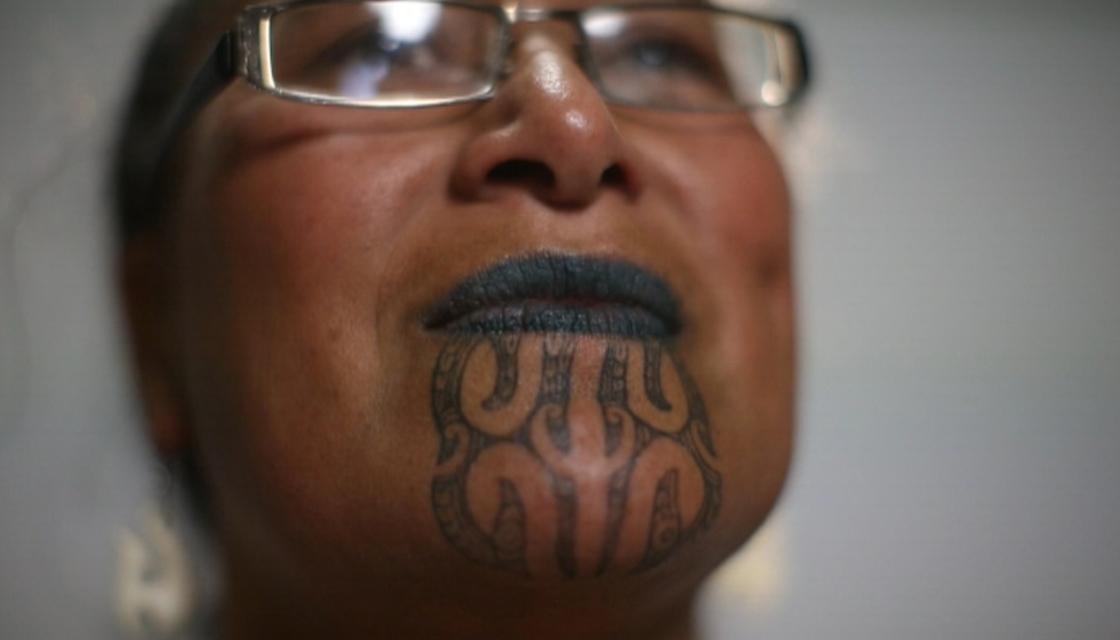Waitangi Day commemorates the beginning of New Zealand and the fusion of two very different cultures. It is a time for celebration, but also for remembering what was lost.
Facial tā moko on both women and men were prominent in Māori culture until Pākehā arrived. In the early years of colonisation, preserved tattooed heads of Māori warriors became souvenirs and collectors' items, which were often traded for guns.
The lucrative market meant that Māori with moko were likely to be killed for their heads, something which lead to a steep decline in the practice.
Decades later, in a much more modern world, a few brave Māori made the decision to embark on the journey of tā moko once again.
The facial tattoos are a celebration of Māori culture, a physical statement of a person's identity.
Tattoo artist Gordon Toi remembers the beginning of the resurgence.
"Initially, in the late 70s early 80s, when people were courageous enough to take their facial moko on, it was exciting for us as artists because that is the true challenge to actually moko somebody's face," he says.
However, during that period many Māori gang members took to tā moko as a statement of rebellion against losing their culture.
The Mongrel Mob was one of the gangs which had many members with facial tattoos. While some members do have tribal designs, others have words like "mobster" or "mongrel mob notorious" across their forehead and cheeks, as documented by photographer Jono Rotman.
Nanaia Mahuta, the first sitting MP to have moko kauae (female chin tattoo), says for a long time people associated facial tattoos with intimidating people.

"There was a time in NZ history where people wearing moko kauae were not well understood; they were judged," she says.
"In fact doing normal day-to-day things became quite stressful because people made judgements on who they were because they wore a facial tattoo and that was likened to gangs."
However, traditional mataora (full facial tattoo worn by men) and moko kauae are making a comeback as more and more Māori reclaim their identity.
In 1997, Rangi McLean became the first university student to graduate with mataora and in 2017, Rawiri Barriball became the first man in the Defence Force to do the same.
"It's people like the sailor, like Nanaia that have blazed a pathway to be able to wear the tā moko with respect and with distinction," Mr McLean says.
"It's been a slow and progressive movement but this movement is bigger than any individual," says Ms Mahuta.
"What you will see is a lot more Māori who will live confidently as Māori and want to share the very best of what we have with the world."
It appears the wider community largely accepts the traditional tattoos, although they do still draw attention.
"You go to Pak'nSave and people are staring at you and you think 'oh yeah' because you are not used to it yourself," laughs University of Auckland library manager Anahera Morehu.
In recent years, tā moko designs have become so popular that people outside of Māori culture have adopted the art. Pop star Rihanna received a traditional tattoo on a visit to New Zealand, a move labelled controversial by many.
Mr Toi believes tā moko should be reserved for Māori only.
"When it comes to facial moko, there are restrictions in terms of who has it in terms of non-Māori. I would never ever tattoo a non-Māori's face. I think those are something that is reserved for Māori," he says.
"We share enough of our culture with the rest of the world; some things we need to maintain for ourselves."
Mr McLean says it is important to understand the depth of the tattoo and how it embodies someone's connection to their whanau and whenua.
"The tā moko is not a tattoo, to us, in terms of being Māori it is a taonga, a treasure."
Newshub.

